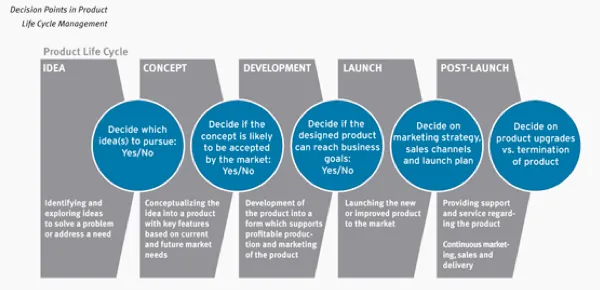-
Call Us(+91) 9811220228
-
Our officeNew Delhi, India
- Get a Quote
Marketing Research
Market research for startups: Get to know your customers, your target market and the competition Purpose of market research
Market research provides an essential tool in helping organizations in their planning and decision-making process. It can validate key assumptions on which the company’s plans are based. Start-ups can use market research to improve the certainty for a number of decisions.
The following model illustrates how market research aids decision-making at different stages of the innovation and product life cycle:

Startups: Use market research for decision making
Market research can inform decisions at multiple stages of the Product Life Cycle:
- At the idea stage: Which ideas to pursue?
- At the concept stage: Will the market accept the concept?
- At the development stage: Can the designed product compete in the market?
- At the launch stage: What presents the best marketing strategy, the most suitable sales channels and the best launch plan?
- Post-launch: Which direction should further product and market development take?
Primary market research
Primary market research is used to uncover original data. There are two types:
Quantitative research
Quantitative research is used to quantify attitudes or behavioural patterns, measure the underlying variables, compare responses and highlight relationships. It involves surveying representative sample populations and extrapolating the results for the entire population. This type of research requires the development of standardized, measurable tools (for example, structured questionnaires).
Qualitative research
Qualitative research is used to provide an understanding of how or why things are the way they are. It may be either exploratory (for example, investigating an unknown sector, identifying the scope of a problem, developing assumptions) or operational (for example, conducting an in-depth analysis of a group’s responses). This type of research may involve a small sample of individuals that does not represent the population.
SECONDARY MARKET RESEARCH
Secondary market research (desk research) involves processing data that has been collected by another party. This type of market research may involve studying anecdotal data that is available through other sources such as reports and press articles or accessing commercially available data through market research reports.
Secondary research is usually less costly and quicker to obtain than primary research. Startups that use secondary research have to weigh this against the fact that the data is collected for another purpose which could influence its relevance and value to your specific purpose.
Market research challenges for technology start-ups
Conducting market research for innovative technologies has its challenges. High-tech environments are defined by constant change and uncertainty. And you cannot always ask your target customers what they want, as they cannot imagine what they are missing. (Their needs might not be obvious to them.) Customers might lack knowledge of which technologies exist or even an understanding of how the technologies work. Furthermore, a challenge may arise out of the fact that it may not be immediately clear how to define the market or the competition.
Start-ups must collect useful information to guide their decisions. Different market research techniques can be used to collect information depending on the type of innovation involved (that is, incremental innovations vs. breakthrough innovations).

